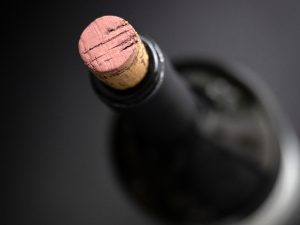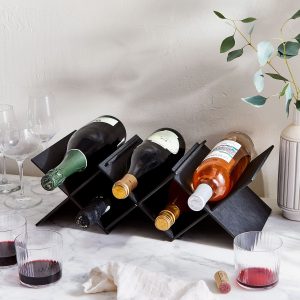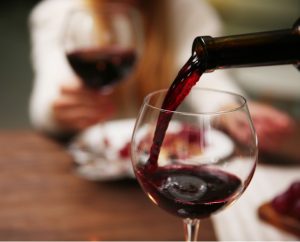Are you wondering how long you can enjoy that bottle of red wine after opening it? Look no further! Red wine can last for several days after opening, depending on a few key factors. Proper storage, the type of wine, and how much air is exposed to the wine can all affect its longevity. So, how long is red wine good for after opening? Keep reading to find out.
Red wine is generally good for 3-5 days after opening, provided it is stored in a cool, dark place and the cork is replaced properly after each pour. However, the quality of the wine may begin to degrade after opening, and it may start to taste flat or develop off flavors. It is best to consume opened red wine within a few days for the best flavor and quality.
How long is red wine good for after opening?
Red wine can last for several days after opening, depending on a few key factors. Proper storage, the type of wine, and how much air is exposed to the wine can all affect its longevity.
Here are a few general guidelines for how long opened red wine will stay fresh:
- If stored in the refrigerator, opened red wine will generally stay fresh for 3-5 days.
- If stored at room temperature, opened red wine will generally stay fresh for 1-2 days.
- If stored in a wine fridge or in a cool, dark place, opened red wine will generally stay fresh for 5-7 days.
- If stored in a decanter with a vacuum wine seal, opened red wine will generally stay fresh for 7-10 days.
It’s worth noting that these are just general guidelines and that the actual shelf life of opened red wine may vary depending on the specific wine and how it was stored. If you’re not sure if the wine is still good, it’s always a good idea to give it a sniff and a taste before drinking it. If it smells and tastes fine, it should be safe to drink. If it has an off odor or taste, it’s probably best to discard it.
Factors that affect the shelf life of open red wine
The shelf life of open red wine can be affected by a number of different factors, including the wine’s initial quality, storage conditions, and how it is sealed and preserved after opening. Some of the most important factors that can impact the shelf life of open red wine include the following:
- Wine quality: Higher-quality red wines tend to have a longer shelf life when opened, as they are typically made with higher-quality grapes and better production techniques.
- Storage conditions: Red wine should be stored in a cool, dark place away from light and heat, as both can accelerate the wine’s degradation.
- Sealing and preserving methods: There are several methods that can be used to seal and preserve open red wine, including using a wine pump to remove air from the bottle, using a wine vacuum sealer, or simply re-corking the bottle and storing it in the fridge.
- Exposure to oxygen: The more a bottle of red wine is exposed to oxygen, the faster it will degrade. This is why it is important to use one of the methods listed above to seal and preserve the wine after opening.
Best way to store open red wine to extend its lifespan
The best way to store open red wine to extend its lifespan is to use a wine pump to remove air from the bottle and seal it with a wine stopper or cork.
This will help to minimize the wine’s exposure to oxygen, which can cause it to degrade more quickly. It is also important to store the wine in a cool, dark place away from light and heat, as both can also contribute to the wine’s degradation.
Another option is to use a wine vacuum sealer, which removes air from the bottle and seals it with a vacuum-tight seal. This can help to preserve the wine for a longer period of time.
Finally, you can simply re-cork the bottle and store it in the refrigerator. This will help to slow down the wine’s oxidation process and keep it fresher for longer. Just be sure to take the bottle out of the fridge and let it come to room temperature before serving, as red wine should be served at a slightly warmer temperature for the best flavor.
Signs to look for to determine if open red wine has gone bad
There are several signs that you can look for to determine if open red wine has gone bad. These signs can help you to identify whether the wine is still drinkable or if it should be discarded.
Some of the most common signs that open red wine has gone bad include the following:
- Change in color: One of the most obvious signs that open red wine has gone bad is a change in color. If the wine has become darker or has developed a brownish hue, it is likely that it has started to oxidize and is no longer fresh.
- Off odors: If the wine has developed an unpleasant or sour smell, it is likely that it has gone bad. This can be a sign of spoilage or infection.
- Flat or dull flavor: If the wine has lost its flavor or has become dull and tasteless, it may be past its prime. This can be a sign that the wine has undergone chemical changes due to exposure to oxygen or other factors.
- Sediment or crystals: If the wine has developed sediment or crystals at the bottom of the bottle, it is likely that it has gone bad. This can be a sign of spoilage or that the wine has undergone chemical changes.
Consequences of drinking spoiled red wine
Drinking spoiled red wine can have a number of potential consequences, depending on the extent of the spoilage and the individual’s sensitivity to the wine’s contaminants. Some possible consequences of drinking spoiled red wine include the following:
- Upset stomach: Spoiled red wine can contain a variety of contaminants, such as bacteria and yeasts, that can cause digestive discomfort or illness. Drinking spoiled wine can lead to symptoms such as nausea, vomiting, and diarrhea.
- Allergic reactions: Some people may have an allergic reaction to the contaminants present in spoiled red wine. This can cause symptoms such as skin rashes, hives, and difficulty breathing.
- Headaches: Some people may experience headaches after drinking spoiled red wine. This can be due to the presence of histamines or other chemicals that can cause headaches in some individuals.
- Hangovers: Even if the wine has not spoiled, drinking too much of it can still lead to a hangover the next day. Symptoms of a hangover can include headache, nausea, fatigue, and muscle aches.
It is important to note that the consequences of drinking spoiled red wine can vary widely and may be more severe for some individuals than for others. If you are concerned about the quality of the wine you are drinking, it is always best to err on the side of caution and discard it.
Best way to preserve the quality of open red wine
There are several methods that can be used to preserve the quality of open red wine and extend its shelf life. Some of the most effective methods include the following:
- Using a wine vacuum pump: A wine vacuum pump removes air from the bottle and seals it with a vacuum-tight seal, which can help to preserve the wine for a longer period of time.
- Re-corking the bottle: Simply re-corking the bottle and storing it in the refrigerator can help to slow down the wine’s oxidation process and keep it fresher for longer. Just be sure to take the bottle out of the fridge and let it come to room temperature before serving, as red wine should be served at a slightly warmer temperature for the best flavor.
- Transferring the wine to a smaller container: Transferring the wine to a smaller container, such as a half-bottle or a wine preserve can, can also help to reduce its exposure to oxygen and extend its shelf life. Just be sure to use a container that is made of a material that will not interact with or alter the flavor of the wine.
Average shelf life of different types of red wine after opening
The shelf life of red wine after opening depends on various factors, such as the type of wine, how it is stored, and how it is sealed. In general, most red wines will last for 3-5 days after opening if they are stored properly.
Here are some general guidelines for the shelf life of different types of red wine after opening:
- Light-bodied red wines (e.g., Pinot Noir, Gamay): 3-5 days
- Medium-bodied red wines (e.g., Merlot, Sangiovese): 3-5 days
- Full-bodied red wines (e.g., Cabernet Sauvignon, Syrah/Shiraz): 5-7 days
To extend the shelf life of your red wine, it is important to store it properly. Red wine should be stored in a cool, dark place, away from light and heat. The wine should also be sealed tightly with a wine stopper or by replacing the original cork.
Finally, it is a good idea to decant the wine into a smaller container to expose it to less air. This will help to slow down the oxidation process, which causes the wine to lose its flavor and aroma over time.
The role of oxygen exposure in the degradation of open red wine
The role of oxygen exposure in the degradation of open red wine is significant. When red wine is opened and exposed to air, it begins to oxidize, a process that can alter the wine’s flavor and aroma.
While some oxidation is natural and contributes to the complexity of wine, excessive oxygen exposure can lead to the wine becoming “oxidized,” which is generally considered a negative quality. To minimize the effects of oxidation and preserve the quality of open red wine, it is important to store it properly and minimize its exposure to air.
Here are some tips for storing open red wine to minimize the effects of oxygen exposure:
- Use a wine stopper or replace the original cork to seal the bottle tightly.
- Decant the wine into a smaller container to expose it to less air.
- Store the wine in a cool, dark place away from light and heat.
- Avoid exposing the wine to fluctuations in temperature or humidity.
- Consume the wine within a few days of opening, as its quality will begin to degrade over time.
The effect of temperature on the shelf life of open red wine
The effect of temperature on the shelf life of open red wine is significant. Wine is a sensitive product that can be easily affected by changes in temperature, and red wine is particularly sensitive to heat.
When red wine is stored at high temperatures, it can cause the wine to age prematurely, leading to a loss of flavor and aroma. On the other hand, storing red wine at cool temperatures can help to preserve its quality for longer.
Here are some tips for storing open red wine at the optimal temperature:
- Avoid storing red wine in a warm, sunny location, as this can cause the wine to heat up and age prematurely.
- Keep red wine in a cool, dark place, ideally at a temperature between 50-59°F (10-15°C).
- Avoid exposing the wine to fluctuations in temperature, as this can cause the wine to become unstable and degrade faster.
- If you need to chill your red wine, place it in the refrigerator for a few hours before serving. However, be aware that storing red wine in the fridge for extended periods of time can cause it to lose some of its flavor and aroma.
- When serving red wine, aim to keep it at room temperature (65-68°F or 18-20°C) to allow it to fully express its flavors and aromas.
The potential benefits of decanting open red wine
Decanting open red wine refers to the process of pouring the wine from its original bottle into a separate container, typically a decanter or a carafe. Decanting has several potential benefits, both for the wine itself and for the overall wine-drinking experience.
Here are some potential benefits of decanting open red wine:
- Improved aeration: Decanting allows the wine to come into contact with more air, which can help to open up the wine’s flavors and aromas. This is especially useful for young red wines, which tend to be more closed and tannic, and can benefit from some aeration before being served.
- Enhanced flavor and aroma: By exposing the wine to more air, decanting can help to release the wine’s full potential and bring out its complex flavors and aromas.
- Separation of sediment: Some red wines, particularly older or more tannic wines, may contain sediment, which is a natural byproduct of the wine-making process. Decanting allows you to separate the sediment from the wine, resulting in a smoother, more enjoyable drinking experience.
- Improved presentation: Decanting open red wine can be a visually appealing process, and the use of a decanter or carafe can add an element of sophistication to your wine service.
- Ease of serving: Decanting open red wine into a separate container can make it easier to pour and serve, especially if the original wine bottle is large or awkward to handle.
Benefits and drawbacks of using a wine preservation system to extend the shelf life of open red wine
A wine preservation system is a device that is designed to extend the shelf life of open red wine by removing the oxygen from the bottle and replacing it with an inert gas, such as nitrogen or argon. There are several potential benefits to using a wine preservation system to extend the shelf life of open red wine, including:
Benefits:
- Prolonged shelf life: By removing the oxygen from the bottle and replacing it with an inert gas, a wine preservation system can help to slow down the oxidation process and extend the shelf life of open red wine. This can be particularly useful for wine enthusiasts who want to savor a bottle of wine over a longer period of time.
- Improved flavor and aroma: By minimizing the wine’s exposure to oxygen, a wine preservation system can help to preserve the wine’s flavors and aromas for longer. This can result in a fresher, more enjoyable drinking experience.
- Convenience: A wine preservation system can be a convenient way to keep open red wine fresh, especially if you don’t plan on finishing the bottle in one sitting.
Drawbacks:
- Cost: Wine preservation systems can be expensive, especially if you are a frequent wine drinker.
- Limited effectiveness: While a wine preservation system can help to extend the shelf life of open red wine, it is not a replacement for proper storage and handling. The wine that is exposed to heat or light or that is not stored properly will still deteriorate over time, even with the use of a wine preservation system.
- Some experts argue that a wine preservation system can negatively affect the wine’s flavor and aroma, as the inert gas used to replace the oxygen can alter the wine’s character.
Use of wine additives to extend the shelf life of open red wine
There are several wine additives that are claimed to extend the shelf life of open red wine by minimizing the wine’s exposure to oxygen and slowing down the oxidation process.
Some of the most common wine additives include:
- Wine preservatives: These are chemicals that are added to wine to inhibit the growth of bacteria and other microorganisms that can cause the wine to spoil. Wine preservatives are often used in mass-produced wines, but they can also be added to open bottles of wine to extend their shelf life.
- Wine stabilizers: These are chemicals that are added to wine to prevent the formation of sediment and stabilize the wine’s color and flavor. Wine stabilizers can be used to extend the shelf life of open red wine by preventing the wine from deteriorating over time.
- Wine antioxidants: These are chemicals that are added to wine to prevent the wine from oxidizing and losing its flavor and aroma. Wine antioxidants can be used to extend the shelf life of open red wine by slowing down the oxidation process.
It is important to note that the use of wine additives to extend the shelf life of open red wine is a controversial topic. Some experts argue that these additives can alter the wine’s natural character and impair its flavor and aroma.
Others claim that wine additives can be useful for preserving the quality of open red wine, especially if the wine is not stored properly or if it is not consumed within a few days of opening. Ultimately, the decision to use wine additives will depend on your personal preferences and the specific needs of your wine.
Impact of wine storage conditions on the shelf life of open red wine
The storage conditions of open red wine can have a significant impact on the wine’s shelf life. Here are some specific factors to consider when storing open red wine:
- Humidity: Red wine should be stored in a place with moderate humidity (50-70%), as extreme levels of humidity can affect the wine’s quality. Too much humidity can cause the cork to become moist and soft, which can lead to leaks and allow air to enter the bottle. On the other hand, too little humidity can cause the cork to dry out and shrink, which can also allow air to enter the bottle.
- Light exposure: Red wine should be stored in a dark place, away from direct light and UV rays. Light can cause the wine to age prematurely and can alter its flavor and aroma. It is best to store open red wine in a wine cellar or a cool, dark pantry.
- Temperature: Red wine should be stored at cool temperatures (50-59°F or 10-15°C) to preserve its quality for as long as possible. Exposure to heat can cause the wine to age prematurely and can alter its flavor and aroma. It is best to avoid storing open red wine in a warm, sunny location or near a heat source.
- Vibration: Red wine should be stored in a place that is free from vibration, as this can disturb the sediment in the wine and affect its quality. It is best to store open red wine on a stable shelf or in a wine rack.
By following these guidelines, you can help to preserve the quality and flavor of your open red wine for as long as possible.
Recommended:
- How much alcohol is in Hennessy?
- How much alcohol is in bud light?
- What alcohol gets you drunk the fastest?
The role of wine closure
The type of wine closure used can have an impact on the shelf life of open red wine. Here are some general guidelines for the shelf life of open red wine with different types of closures:
Cork
A cork is a traditional closure for a red wine that has been used for centuries. Corks are made from the bark of the cork oak tree and are prized for their ability to seal the wine bottle and protect the wine from oxygen exposure.
A properly sealed cork will allow a small amount of oxygen to enter the bottle over time, which can help to soften and mature the wine. However, if the cork is damaged or poorly sealed, it can allow too much oxygen to enter the bottle, which can cause the wine to become oxidized and lose its flavor and aroma. In general, red wine with a cork closure will last for 3-5 days after opening.
Screw cap
A screw cap is a closure that consists of a metal cap with a screw thread that is used to seal the wine bottle. Screw caps are becoming increasingly popular as an alternative to corks, as they are easier to open and remove, and they provide a more reliable seal.
Screw caps are generally considered to be more effective at preserving the quality of open red wine, as they allow for less oxygen exposure. Red wine with a screw cap closure will generally last for 5-7 days after opening.
Conclusion
The shelf life of red wine after opening depends on various factors, including the type of wine, the closure used, and how it is stored. Most red wines will last for 3-5 days after opening if they are stored properly, with full-bodied red wines tending to have a slightly longer shelf life.
To extend the shelf life of open red wine, it is important you know how long is red wine good for after opening so you can know the right way to store it.
Wine preservation systems and additives can also be used to extend the shelf life of open red wine, although their effectiveness and impact on the wine’s flavor and aroma are debated. Ultimately, the key to preserving the quality of open red wine is proper storage and handling, as well as time consumption.





